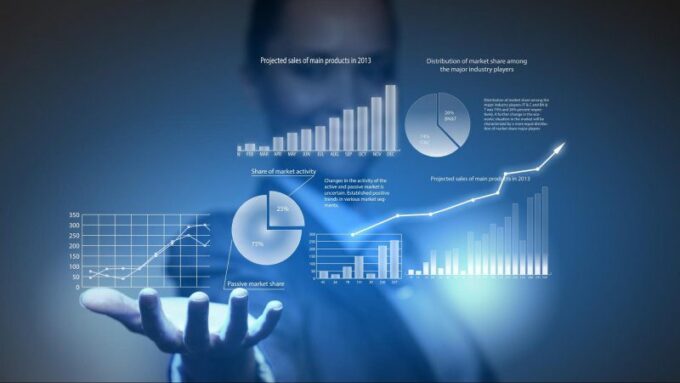Data Science is about gaining business benefits through the application of artificial intelligence using various sources of information: e.g., sales history for each customer, search engine query statistics, and the timing of sporting events. Data sources can be internal or external.
Raw and unstructured data hides knowledge that is useful for business. But extracting it and using it correctly is a complex and time-consuming task.
By the way, you can learn about the latest data science solutions here – https://nix-united.com/services/data-science/.
What Data Science Studies
Humankind generates about 2.5 quintillion bytes of different data every day. They are created literally every time you click and swipe a page, not to mention watching videos and photos on online services and social media.
The science of data has been around long before its volume exceeded every conceivable prediction. The countdown began in 1966, when the Committee on Data for Science and Technology, CODATA, came into existence. It was created as part of the International Council for Science to collect, evaluate, store, and retrieve the most important data for scientific and technical purposes. The committee consists of scientists, professors from major universities, and representatives of science academies from several countries, including Russia.
The term Data Science was introduced in the mid-1970s at the suggestion of Danish computer scientist Peter Naur. According to his definition, the discipline studies the life cycle of digital data from inception to use in other fields of knowledge. But over time the definition has become broader and more flexible.
In the 2010s, data volumes began to grow exponentially. A number of factors – from the ubiquity of mobile Internet and the popularity of social networks to the general digitization of services and processes – played their part. As a result, the data scientist profession quickly became one of the most popular and in-demand professions. Back in 2012, journalists called the data scientist position the most attractive job of the 21st century.
The development of Data Science has gone hand in hand with the introduction of Big Data and data analytics technologies. Although these fields often overlap, they should not be confused with one another. They are all about understanding large amounts of information. But while data analytics answers questions about the past, Data Science literally looks to the future. DS specialists can create models based on big data that predict what will happen tomorrow. This includes predicting demand for certain goods and services.
Data Science Solutions for Business

Companies use Data Science regardless of the size of their business, Kaggle statistics show. And IDC and Hitachi calculate that 78 percent of businesses confirm that the amount of information they analyze and use has increased significantly recently. Enterprises are realizing that unstructured information contains knowledge that is very important to companies and can affect business results, the study authors say.
And it applies to a wide variety of industries. Here are just a few examples of industries that are using Data Science to solve their problems:
- Online commerce and entertainment services: recommendation systems for users;
- Healthcare: disease prediction and health maintenance recommendations;
- Logistics: planning and optimizing delivery routes;
- Digital advertising: automated content placement and targeting;
- Finance: scoring, fraud detection and prevention;
- Industry: predictive analytics for repair and production planning;
- Real estate: finding and offering the most suitable properties for the buyer;
- Public administration: forecasting of employment and economic situation, fighting crime;
- Sports: selecting promising players and developing game strategies.
And this is just the shortest and most superficial list of applications of Data Science. The number of different uses of “data science” increases exponentially every year.
Every Internet user and consumer encounters products and solutions that use Data Science tools dozens of times a day. For example, the audio service Spotify uses them to better tailor tracks for users according to their preferences. The same can be said for movie and series offerings on streaming video services like Netflix. And Uber sees data science as a tool for predictive analytics, demand forecasting, improving and automating all products and customer experiences.
How Data Analysts Work

Data scientists use an array of tools to work with data – statistical modeling packages, various databases, and specialized software. But most importantly, they use artificial intelligence technology and create machine learning models to help businesses analyze information, draw conclusions and predict the future.
What needs to be done before implementing Data Science projects?
- Set the right goal: What is the purpose of data analysis and what are the results?
- Identify the key parameters that need to be tracked (product name, part number, seasonality).
- Determine influencing factors for hypothesis testing and machine data processing methods. Understand what influences product sales and develop hypotheses that can be confirmed or refuted.
- Determine the frequency of data collection. If there is insufficient information, the hypothesis should be discarded.
- Create a data warehouse that allows all hypotheses to be processed.
Features of Data Science project implementation
The implementation of Data Science can be compared to a marathon. Detailed research and data analysis require time and great expense. For a retailer with a chain of stores, this can cost several million rubles. It is necessary to take risks into account and properly structure the data. Gartner estimates that about 85% of Data Science projects fail. Venture Beat also offers disappointing statistics – only one in ten projects to implement artificial intelligence is put into practice.
Data Governance
Data governance is a critical aspect that ensures data quality, security, and compliance. In today’s data-driven world, businesses accumulate vast amounts of information. Without proper governance, this data can become a liability rather than an asset. Effective data governance practices make sure that the data is accurate, consistent, and secure, allowing businesses to derive trustworthy insights for decision-making. This is especially important for companies investing in Data Science Training or Data Science Certification, as even the most advanced analytics are only as good as the data feeding them. By having robust data governance measures in place, companies not only comply with legal regulations but also gain a competitive advantage through high-quality, reliable data.
What are the conclusions?
Due to growing competition, the retail industry is increasingly focused on improving the efficiency of processes. Data Science will be the best solution for the business, they are able to bring traditional processes to a whole new level: it predicts demand in each retail outlet in real time, helps to form personalized offers for a specific customer and conduct effective promotions, which allows the retailer to save billions of rubles that were previously spent because decisions were based not on real data, but on subjective assumptions of employees.









